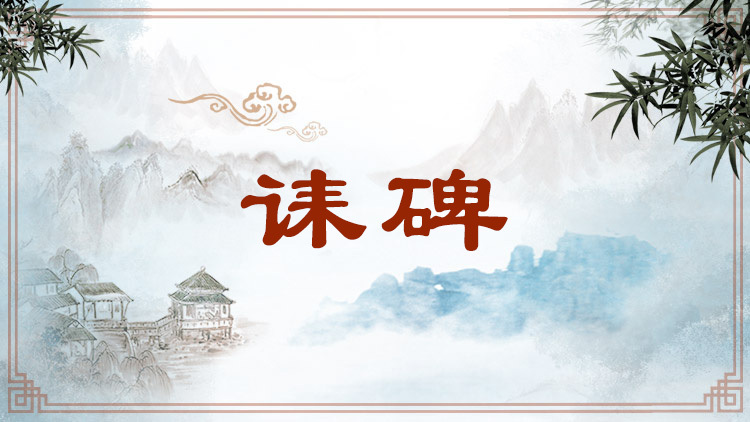Eulogy or Inscription Carved on a Stela

古代文体名称,是为有一定成就或德行的逝者撰写的篇幅短小的誉美性传文。“诔”(音同磊)主要叙述逝者的德行,表达作者的哀伤,通常用韵文写作;“碑”是刻在石碑上的文辞,一般分两部分:前半简要叙述逝者的生平,后半则用韵文赞美逝者的功业和品德。南朝刘勰认为,诔碑立传的对象,已经由帝王逐渐延及普通人,立传的目的是让逝者的精神永远不朽。其写作要求是,记载事迹要如实,故应有所选择;评述德行较虚,故可以多加誉美。诔文和碑文是生者缅怀逝者的情感需求,满足每个人追求不朽的心理需求,也有弘扬美德、激励后人的意义,因此要避免轻率为文、简单臧否。
These constitute a genre of short rewriting in ancient times to sing the praise of a meritorious or virtuous deceased person. Such a eulogy, written in rhymed verse, was usually used to recount the deceased person's virtuous deeds and expressed one's grief over his death. The inscription carved on a stela has two parts, with the first part being a brief account of the life of a deceased person and the second extolling the person's merits and virtues. According to Liu Xie of the Southern Dynasties, this kind of writing was no longer only written for emperors and kings, but was extended to cover ordinary people. The text was written to see that the deceased person's noble character passes down to posterity. It should highlight the person's deeds truthfully and eulogize his fine deeds and virtue. A eulogy or an inscription carved on a stela was written to cherish the memory of the deceased and satisfy the need of those who were alive to seek eternal solace. It should also promote virtue and inspire later generations to excel. So, it should be discreet and proper in its assessment of the deceased person.
引例 Citations:
◎ 诔者,累也;累其德行,旌之不朽也。(刘勰《文心雕龙·诔碑》)
“诔”的意思是积累,就是罗列逝者的德行,加以表彰而使之永垂不朽。
Lei originally meant accumulate, so a eulogy lists a deceased person's meritorious and virtuous deeds and extols him to make him eternal. (Liu Xie: The Literary Mind and the Carving of Dragons)
◎ 夫属碑之体,资乎史才,其序则传,其文则铭。(刘勰《文心雕龙·诔碑》)
写作碑文,须有史家的才能。它前面的叙事相当于史传,后面的韵文相当于铭文。
It requires a historian's talent to write a eulogy carved on a stela. Its first half is no different from a biography and its second half, written in rhymed verse, is like an epigraph. (Liu Xie: The Literary Mind and the Carving of Dragons)
推荐:教育部 国家语委
供稿:北京外国语大学 外语教学与研究出版社
责任编辑:钱耐安





